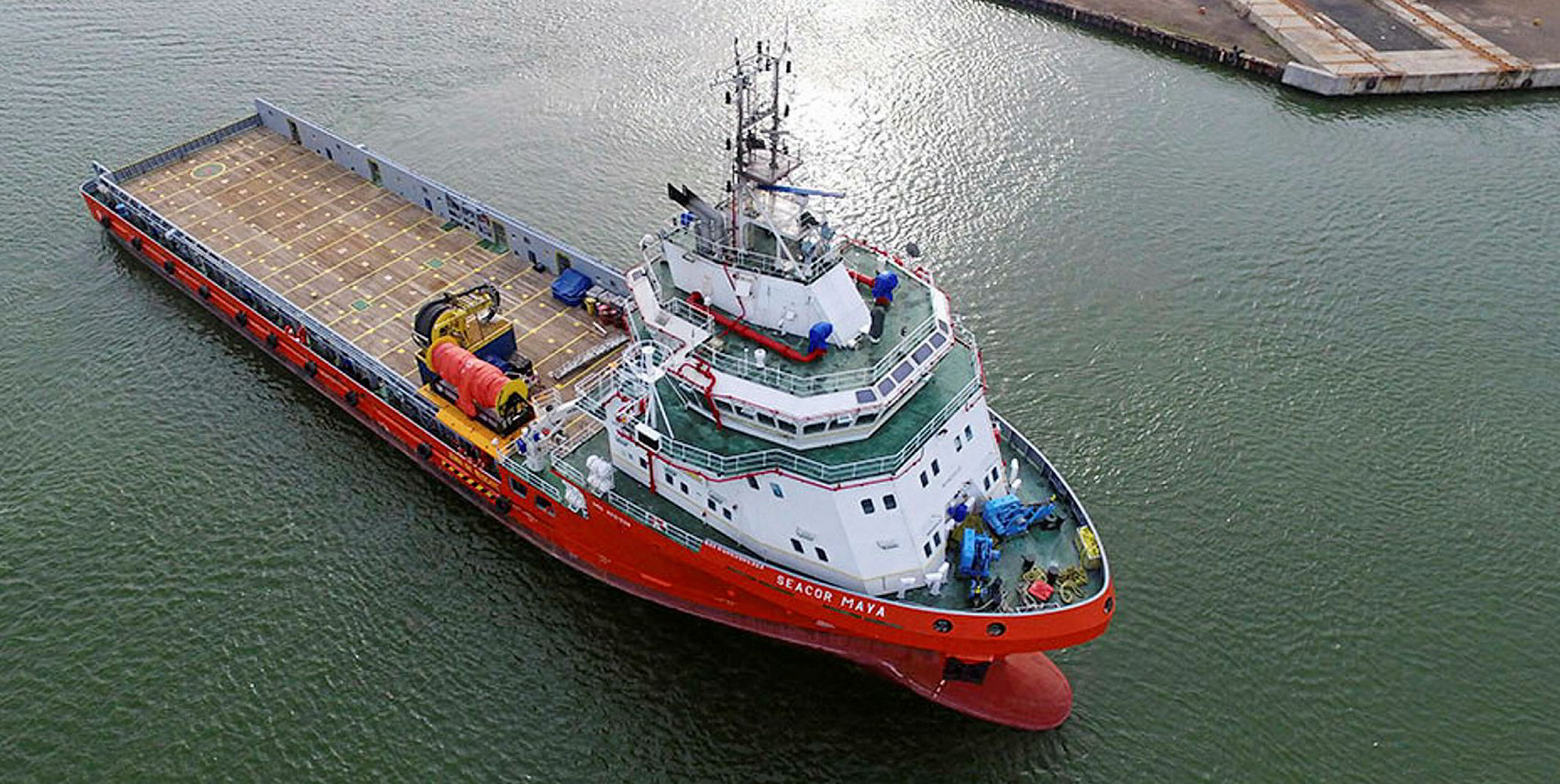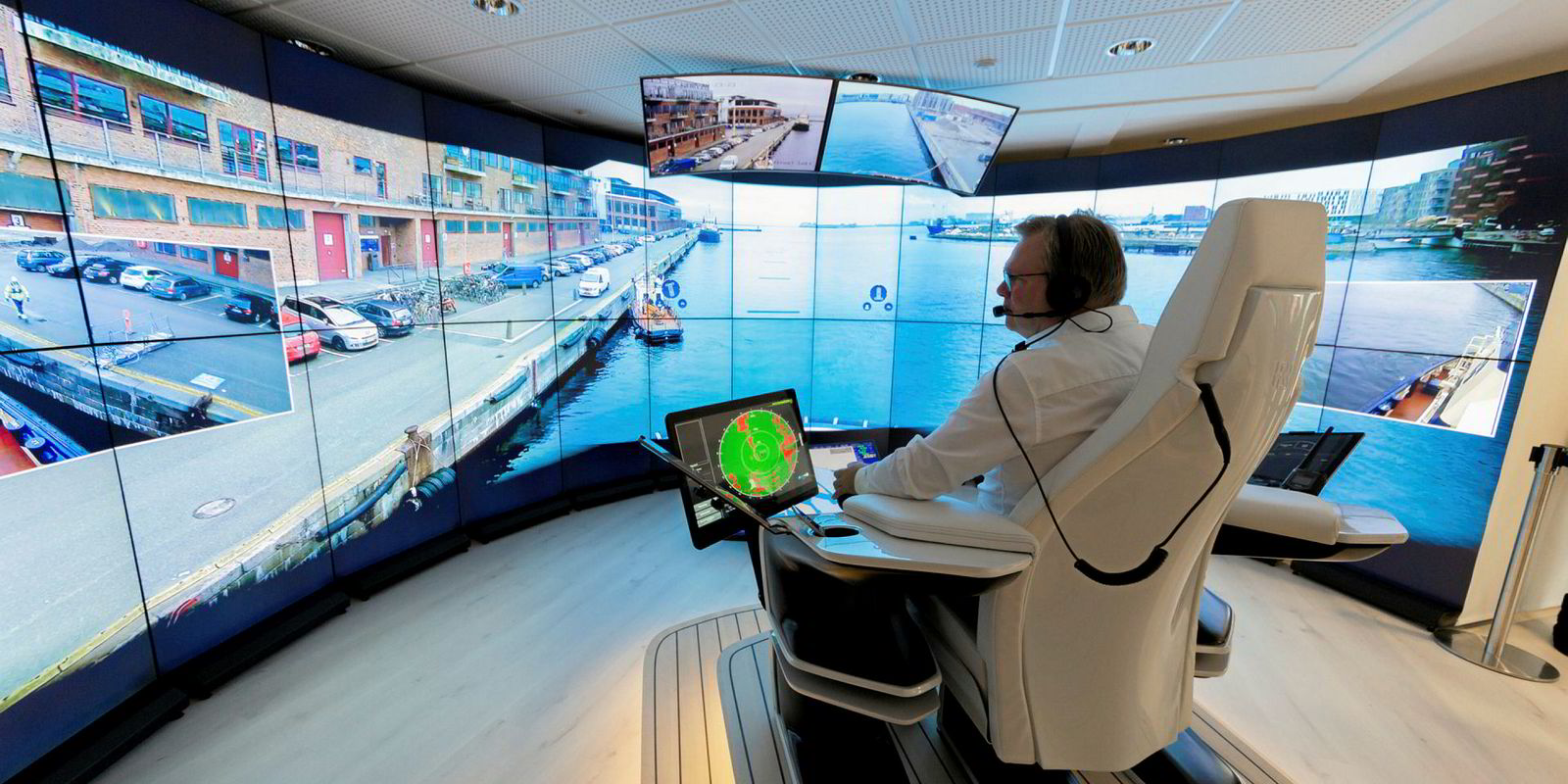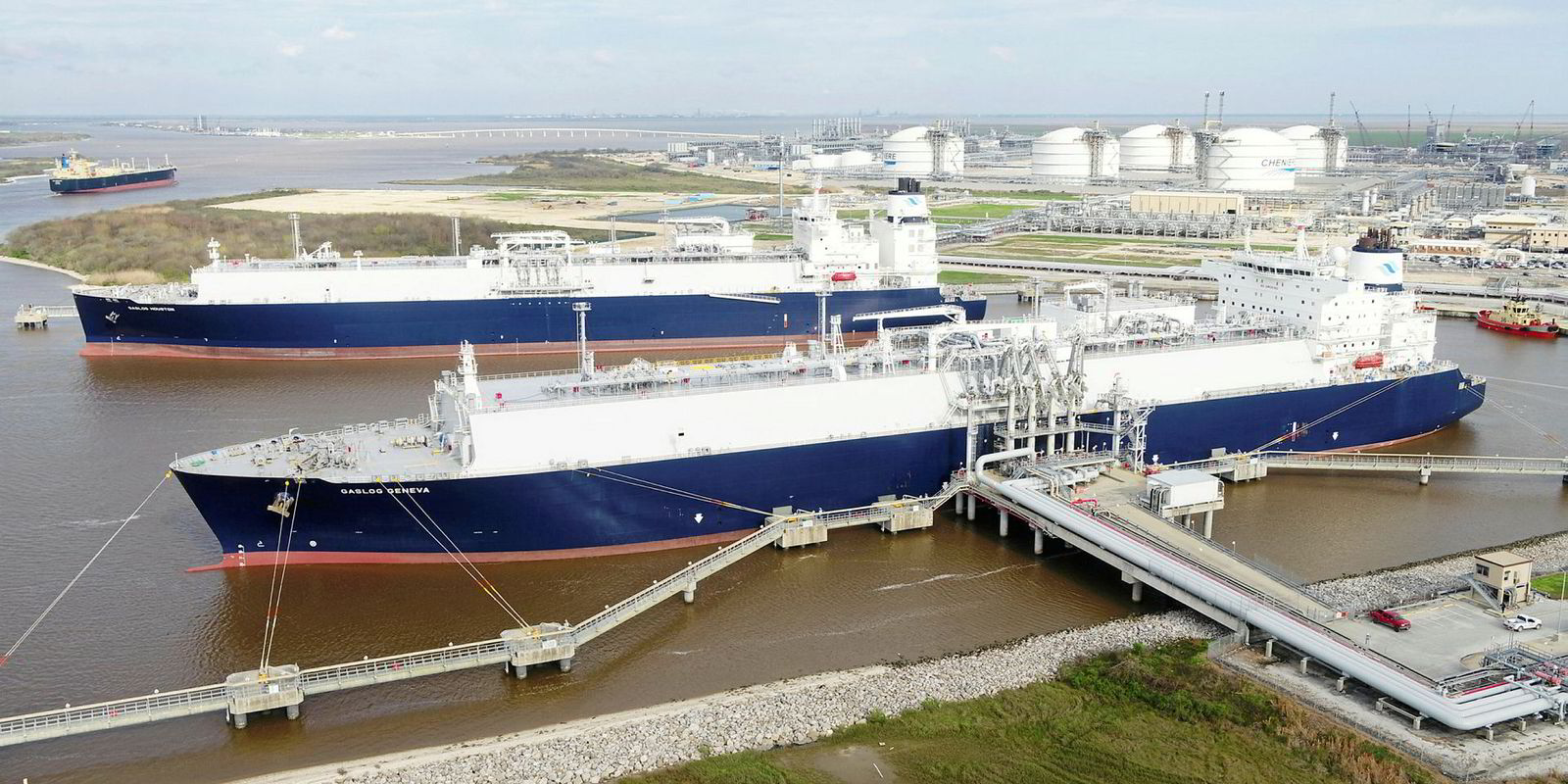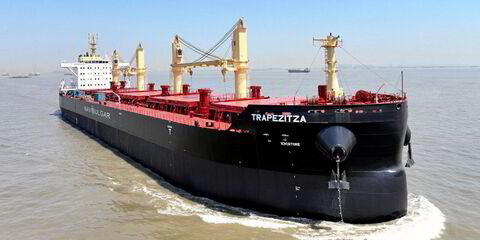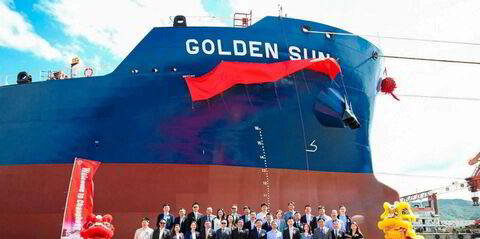The shipping industry is likely to see a growing use of batteries for auxiliary applications on large vessels, as well as for primary propulsion on smaller craft, says ABS senior vice president Jamie Smith.
Earlier this year, ABS was selected by Seacor Marine to class the first offshore support vessel in the Gulf of Mexico to operate using hybrid power. The ABS Battery-Li notation was requested for the Seacor Maya’s lithium battery system.
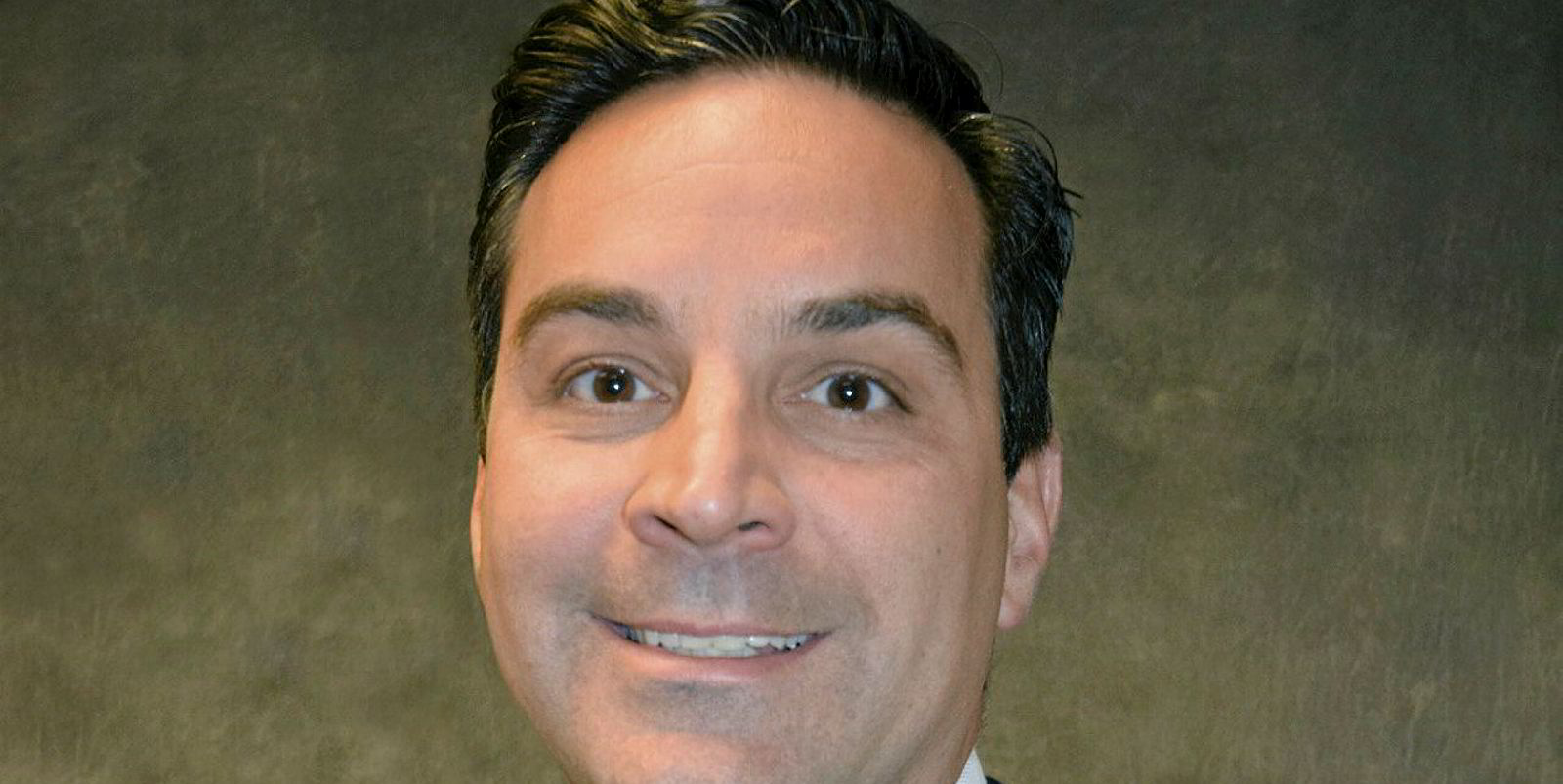
Tim Clerc, Seacor’s manager of engineering, said at the time of the announcement that the hybrid power solution had the potential to reduce fuel consumption on the 5,116-dwt Seacor Maya (built 2015) by up to 20%.
The first hybrid battery upgrade was delivered in May and three sister vessels are due to be fitted with battery packages later this year.
Clerc says operational savings will also reduce emissions and “facilitate our compliance with strict environmental regulations”.
The Seacor Maya is operated by Mantenimiento Express Maritimo, Seacor’s joint venture in Mexico.
Also this year, Stena Line signed up with Callenberg Technology Group for 1MW batteries for its 30,000-gt ropax Stena Jutlandica (built 1996), which operates between Gothenburg in Sweden and Fredrikshavn in Denmark.
The first stage is battery power for bow thrusters and manoeuvring while berthing in port. The second phase is an extended battery operation connected to the propellers, so the ship can be operated within a range of 10 nautical miles (18.5 kilometres). Stage three is battery capacity for operation of 50 nautical miles.
“As both the size and cost of batteries decrease, battery operation becomes an exciting alternative to traditional fuels for shipping, as emissions to air can be completely eliminated,” Stena Line chief executive Niclas Martensson says.
Nick Brown, Lloyd's Register's marine and offshore director, refers to the focus on replacing one of the traditional three diesel-generator sets in ships, alongside the main engine, with a large battery to meet peak load demand, such as during cargo operations. The single diesel generator that is running then recharges the battery pack, mirroring a Toyota Prius car on land.
ABS, which recently released guidance on DC power distribution to support the safe application of hybrid power onboard ships, has also issued a conditional approval in principle to the conceptual design of a hydrogen-powered fast ferry, the SF Breeze.
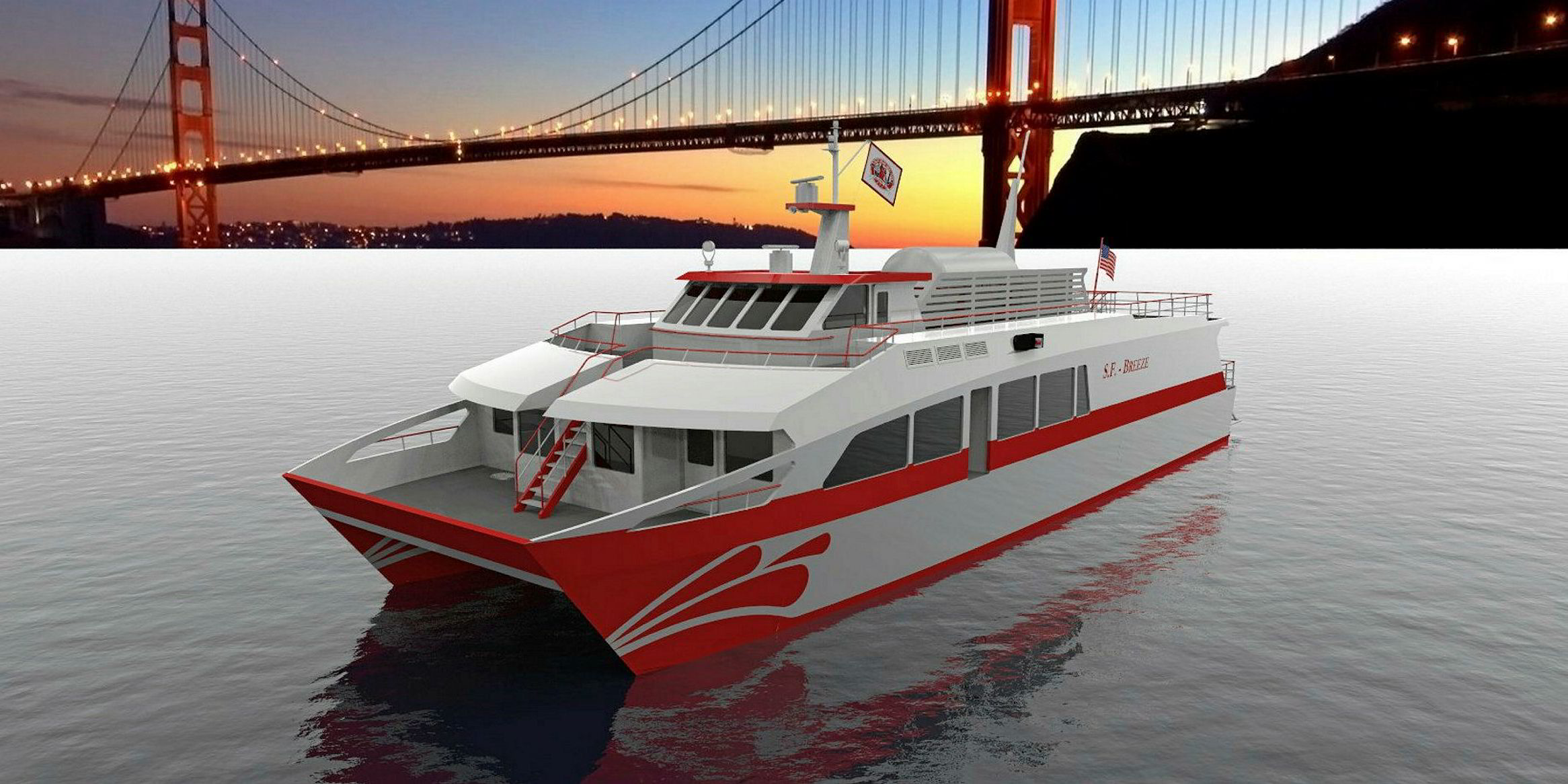
The vessel, planned to operate in San Francisco Bay, will be powered by proton-exchange membrane fuel cells, selected from several options for the power plant due to their low weight and volume, commercial availability, proven track record, zero-emissions characteristic and power performance.
Rolls-Royce recently announced it is launching a lithium-ion-based energy-storage system for ships, a liquid-cooled battery arrangement of modular design that can be scaled according to energy and power requirements.
Partly funded by the Research Council of Norway's Energix programme, development has involved shipowning partners Color line, Norled and the Norwegian Coastal Administration Shipping Co. Applications include ferries, cruiseships and multipurpose vessels.
Meanwhile, Belgian shipping group Compagnie Maritime Belge is working with Lloyd’s Register on a pilot project involving the use of a small hydrogen-fuelled ferry — the Hydroville — to transport employees and other commuters across the River Scheldt between Kruibeke and Antwerp.
“It is quite a small ferry but it is a project where we and the industry can gain experience and prove, a little like LNG, that the technology works and how it can be extrapolated on a larger scale,” Brown says.
ABS' Smith says it is hard to overstate the degree of difficulty in decarbonising an industry that has operated on fossil fuels for centuries.
“It is vital the IMO works with the industry to support innovation and to make clear what transitional and long-term measures it will put in place to enable this monumental change,” Smith says.
"For industry, it will mean a new level of coordination and cooperation. Designers, shipyards, class, owners and OEMs [original equipment manufacturers] will need to work together to develop, test and promote low-carbon technologies. Working on single-subject projects in silos is not going to deliver the required results.”
He says if we accept that the internal combustion engine will still be required to provide most propulsive power for the foreseeable future, “then alternatives such as LNG, LPG, methanol and ethanol will continue to increase their market share, as new power sources such as hydrogen and batteries come onstream”.
